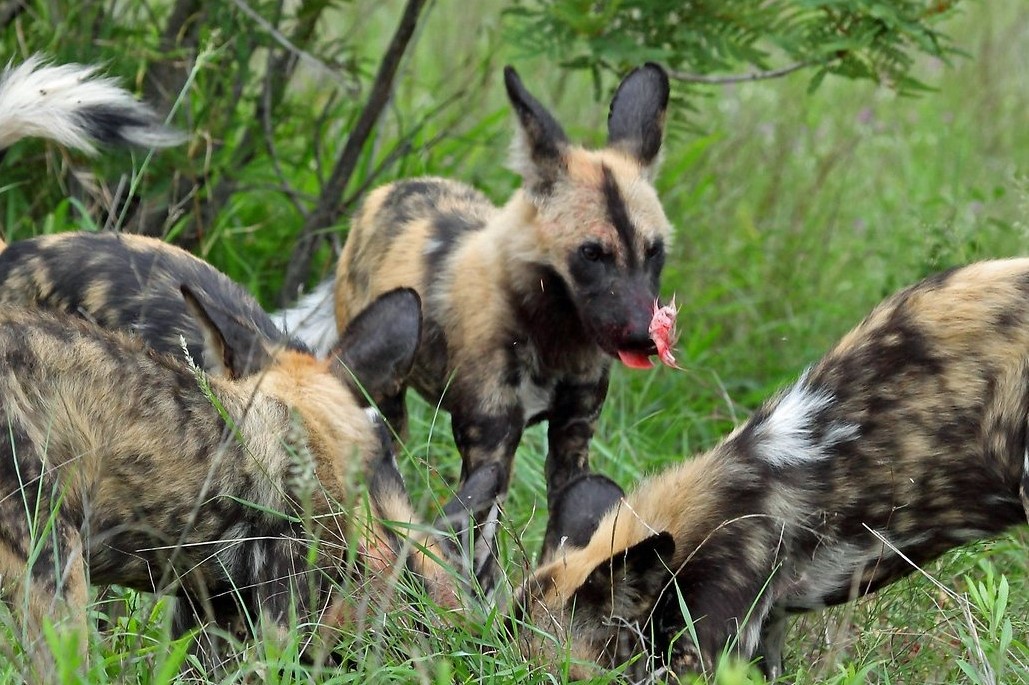The Endangered Elegance: African Wild Dogs in Uganda
African Wild Dogs (Lycaon pictus) in Uganda: Uganda, lying in the heart of East Africa, is gifted with a range of biodiversity; one of its most striking inhabitants comprises the African wild dog, Lycaon pictus. Other common names for this animal include the African-painted dog and Cape hunting dog. It has a distinctive coat pattern and very social behavior. However, despite this distinctive charm, African wild dogs are hounded by several threats, thereby making the effort of their conservation quite critical.
Physical Characteristics of African Wild Dogs.
African wild dogs are recognized by their striking coat pattern, which is brightly mosaic: black, yellow, and white. Each animal differs in its pattern and is thus easily identifiable. Lean-in build, with large ears, these dogs are adapted for endurance running, a requisite of their hunting strategy.
Distribution and Habitat of African Wild Dogs.
Once found on much of the African continent, the wild dog has declined drastically. In Uganda, these elusive canids are now generally restricted to the protected areas of Kidepo Valley National Park. At the same time, their preferred habitats are grasslands, savannas, and woodland zones with enough prey.
Social Structure and Behavior:
One of the most exciting things about Lycaon pictus is that they are extremely social creatures. They live in packs, which are led by an alpha pair. Every individual is important for the group to survive. Pack members show strong bonds, expressed through vocalizations, body language, and other community activities. Their cooperative hunting strategy always ensures the success of the pack in bringing down a kill.
Reproduction and Lifecycle of Lycaon pictus.
The African wild dogs have a very intricate breeding system. Usually, only the alpha pair can breed, while all pack members care for and protect the pups. The gestation period is approximately 70 days, and litter size ranges between 6 and 16. The survival rate for the puppies is highly dependent on the ability of the pack to provide food and protection.
Threats to the African Wild Dogs in Uganda
Despite their remarkable adaptability, Lycaon pictus are threatened by many severe threats to their population. Among the key challenges are habitat loss, human-wildlife conflict, and diseases transmitted by domestic dogs. Fragmentation of natural habitats exposes this species to the risk of inbreeding, thus a very low level of genetic diversity.
Conservation Efforts:
Due to the dismal state of affairs, various conservation bodies in Uganda conduct myriad activities to ensure a future for this elusive dogs specie through habitat restoration, education to the communities on coexistence with wildlife, and monitoring and research activities that will raise knowledge about their needs.
Conclusion on African Wild Dogs in Uganda
The occurrence of this dog species shows that Uganda is still committed to preserving its rich biodiversity. Although protection efforts for these endangered canids are vital, such awareness and conservation should guarantee the possibility of continuing to see the grace and beauty of the African wild dog in its natural setting for future generations. By adopting sustainable practices and coexistence, Uganda can play an indispensable role in securing the survival of this unique and endangered species.












